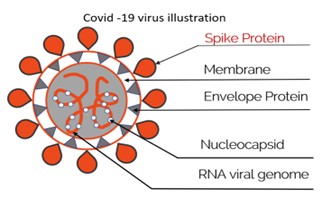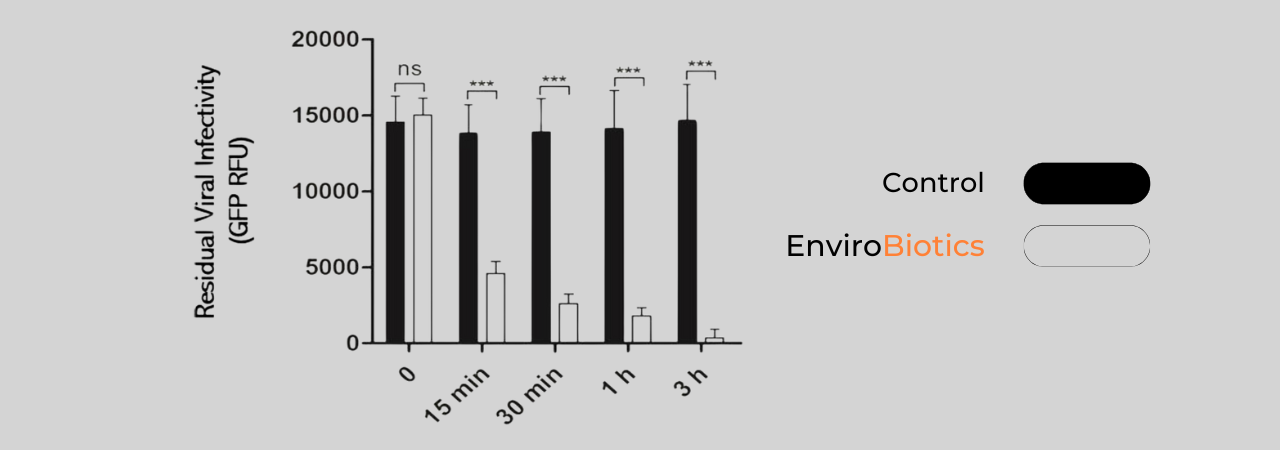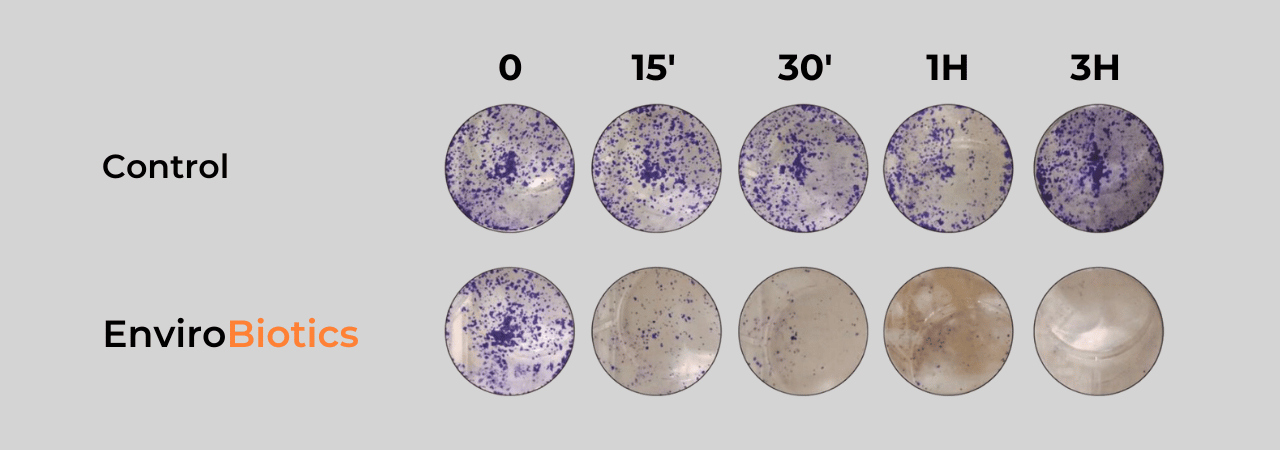A new path to suppress Covid-19 on surfaces
The Challenge
The highly contagious COVID-19 pandemic seems to be a problem of the past. According to conventional wisdom, it is just a matter of time before a similar, possibly harder, global pandemic hits us. Without new preventive measures, we are bound to repeat similar consequences.
SARS-CoV-2 (Covid-19)
The highly contagious SARS-CoV-2 (COVID-19) hit the world in March 2020, and its multiple mutations made it difficult to fight against. This resulted in casting havoc on societies, where hundreds of people were impacted by deteriorated health and financial conditions; in Asia, only in late 2023 were strict restrictions such as curfews lifted.

The virus enters the body via inhalation or penetration through skin, eyes, and other soft tissues; upon entry, it bypasses the immune system and attaches itself to a living cell via its Spike Protein micro rods. Eventually, it destroys the cell and clones itself, entering new cells.
The contracted person emitted the lethal droplets via nose and mouse, but since they are heavy, they immediately descend and settle on surfaces and objects below. It is said that 2 meters is a safe zone away from the sick person.
When the sick person is sent away to isolation, the injection of the virus into the air is terminated. However, the viruses that already stick to the surfaces are still potent and can stay potent for an extended time, and measurements show that 2 weeks is not uncommon.
Moreover, the airborne viruses may get into the air ducts, circulate across the facilities, and then land on surfaces and objects in areas the sick person had not even visited.
Therefore, to protect against viral attacks, measures such as masks and bodily hygiene practices should be taken, but these must be complemented by effective measures to keep our objects clean of viruses; manual disinfecting is very limited in its reach and efficacy where only a small portion of the property is properly treated; also, delicate objects such as soft fabric, screens, and keyboard are usually not treated with these harsh chemicals.
The Study:
The study has aimed to discover automated, long-lasting ways to protect surfaces and objects against viruses. Enviro-Biotics biological cleaning has been challenged to accomplish that ambitious target.

In a series of experiments carried out in Genova University’s Department of Experimental Medicine, EnviroBiotics liquids were incubated with the viral particles of the SARS-CoV-2. Coronavirus. The scientists observed and measured the breaking down of the SARS-CoV-2 Spike protein, as the Spike is the vehicle for the viral attachment to the human cell, membrane fusion, and subsequent infection. Therefore, inactivation of the spike protein prevents the virus-cell attachment and blocks viral infection, resulting in a rapid inactivation of the viruses.
Results:
EnviroBiotics suspension neutralized 67% of the viruses within 15 minutes, and continued exposure for 3 hours increased neutralization to 97.7% of viruses. Here is a summary of the rate of the virus’s neutralization over time:
The Effect Of EnviroBiotics On Covid-19 Survival On Surfaces

It is important to note that the scientists used “control”—identical environments where the same viruses were measured without exposure to EnviroBiotics; the “control” is crucial to validate results and eliminate the chance that viruses may decrease spontaneously. The viruses in the parallel untreated control surfaces were stable, indicating that there was no spontaneous viral count reduction, and the entire reduction of the viruses is assigned to activities by Enviro-Biotics only.
A colony-forming assay validated EnviroBiotics’ virucidal efficiency. We have demonstrated a significant deactivation effect of Enviro-Biotics® on viral survivability, as depicted in the figure below.
In this assay, inactive viruses correlate with clear plates, and indeed, the viruses that Enviro-Biotics® treated significantly cleared the plates.
EnviroBiotics Effect On Covid-19 Persistence

The data presented in this study demonstrates that the microbial bio-control approach is applicable and efficient in preventing COVID-19 infections that originate from contaminated surfaces and objects. It showed that applying EnviroBiotics into our indoor areas induces the biological deactivation of viral particles. This study’s drastic viral survivability reduction is pertinent to any indoor space, including public, health, and transport sectors.
Considering that COVID-19 exists on surfaces and objects, the results are encouraging in our quest to apply better techniques to prevent and suppress the global pandemic. It is especially encouraging that EnviroBiotic biocontrol is long-lasting, which is in sharp contrast to the way chemical-based disinfectants are deployed despite their being known to be effective in extremely short durations.

